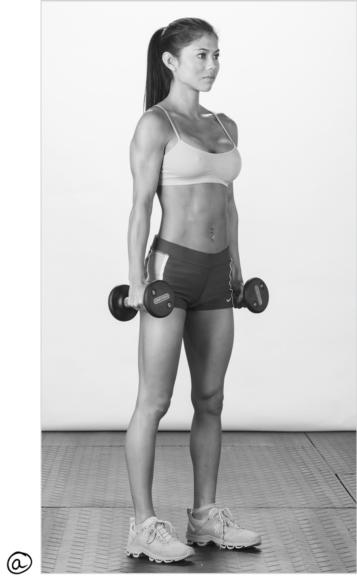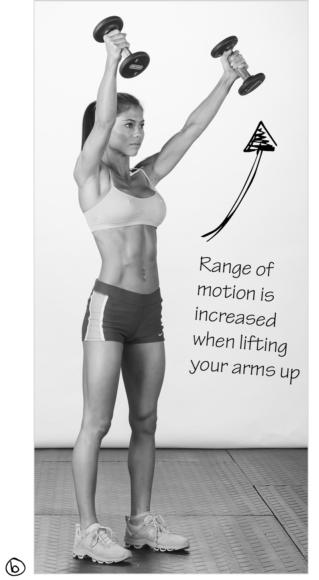Dumbbell front shoulder raise
This is an excerpt from Your Workout PERFECTED by Nick Tumminello.
 |
 |
Setup
Stand tall, with your feet hip-width apart. Hold a pair of dumbbells at your sides (see figure a).
Action and Coaching Tips
With your elbows slightly bent, raise your arms out in front of your body until your elbows go just above your forehead (see figure b). Do not swing the weight up. Slowly lower the dumbbells back to your sides. Use deliberate control on the lifting and lowering portion of each rep.
Why It's Better
You increase range of motion when lifting your arms up during this exercise. Stopping when your arms are parallel to the floor is like stopping a biceps curl when your forearm is parallel to the floor.
Many lifters say they don't lift their arms above shoulder level - even keeping them slightly below shoulder level - when doing shoulders raises to minimize the involvement of the upper traps. Interestingly, many of these same people do shrugs, upright rows, and other trap-oriented exercises.
Now, if for some reason you're avoiding upper trap exercises and do not want activity in your upper traps, just know that research has found that, out of 16 commonly used shoulder training and rehabilitation exercises - such as seated row, knee push-up plus, or biceps curl - all but one exercise showed moderate to low activity in the upper traps. And none of the 16 exercises investigated in this study were a shoulder shrug or upright row. The one exercise mentioned here is commonly known as the full can, which is where you're standing with your arm at your side in external rotation. Then you lift your arm in the scapular plane (at a 30-degree angle to your torso) until your arm is 90 degrees to the floor. In short, it's very much like a side shoulder raise.
The point is, don't have the delusion that your upper traps aren't being activated in upper-body exercises that you didn't think involved that muscle group.
Benefits
- Greater range of motion
- More comprehensive shoulder training
Learn more about Your Workout PERFECTED.
More Excerpts From Your Workout PERFECTEDSHOP

Get the latest insights with regular newsletters, plus periodic product information and special insider offers.
JOIN NOW


